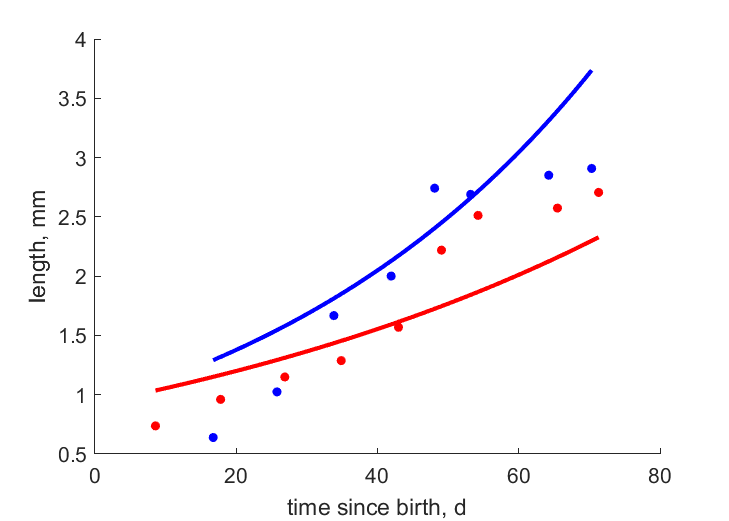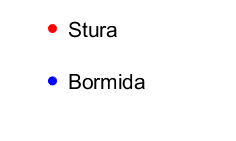Predictions & Data for this entry
| Model: hep | climate: Cfb, Dfb, Dfc | migrate: | phylum: |
| COMPLETE = 1.0 | ecozone: TH | food: beH, beD, beS | class: |
| MRE = 0.080 | habitat: 0eFl, 0eFp, 0eFm, eiTg | gender: D | order: |
| SMSE = 0.013 | embryo: Fs | reprod: Os | family: |
Zero-variate data
| Data | Observed | Predicted | (RE) | Unit | Description | Reference |
|---|---|---|---|---|---|---|
| ab | 25 | 22.63 | (0.09492) | d | age at birth | guess |
| tj | 360 | 395.8 | (0.09951) | d | time since birth at emergence | guess |
| am | 7 | 6.949 | (0.007261) | d | life span as imago | guess |
| Lj | 1.5 | 1.511 | (0.007584) | cm | female body length at emergence, excluding tails | Wiki |
| Wd0 | 0.0006 | 0.0005932 | (0.0113) | mg | initial dry weight | guess |
| Wdj | 2 | 2.158 | (0.07913) | mg | ultimate dry weight | guess |
| Ni | 2500 | 2362 | (0.05512) | # | cumulative # of eggs | guess |
Uni- and bivariate data
| Data | Figure | Independent variable | Dependent variable | (RE) | Reference |
|---|---|---|---|---|---|
| tL_Stura |   | time since birth | length | (0.1776) | FenoBo2005 |
| tL_Bormida |   | time since birth | length | (0.1879) | FenoBo2005 |
Pseudo-data at Tref = 20°C
| Data | Generalised animal | Oligoneuriella rhenana | Unit | Description |
|---|---|---|---|---|
| v | 0.02 | 0.001675 | cm/d | energy conductance |
| p_M | 18 | 23.12 | J/d.cm^3 | vol-spec som maint |
| k_J | 0.002 | 0.002 | 1/d | maturity maint rate coefficient |
| k | 0.3 | 0.3806 | - | maintenance ratio |
| kap | 0.8 | 0.4386 | - | allocation fraction to soma |
| kap_G | 0.8 | 0.8083 | - | growth efficiency |
| kap_R | 0.95 | 0.95 | - | reproduction efficiency |
Discussion
- Life span (and h_a) relates to imago
Facts
- Imagos are extremely short lived and do not feed; nyphs allocate to reproduction buffer and have mature eggs (Ref: Sold1979)
- Estimates of the number of instars in ephemeropterans vary between 10 and 50; most are in the range 15-25 (Ref: Brit1982, what_when_how)
Bibliography